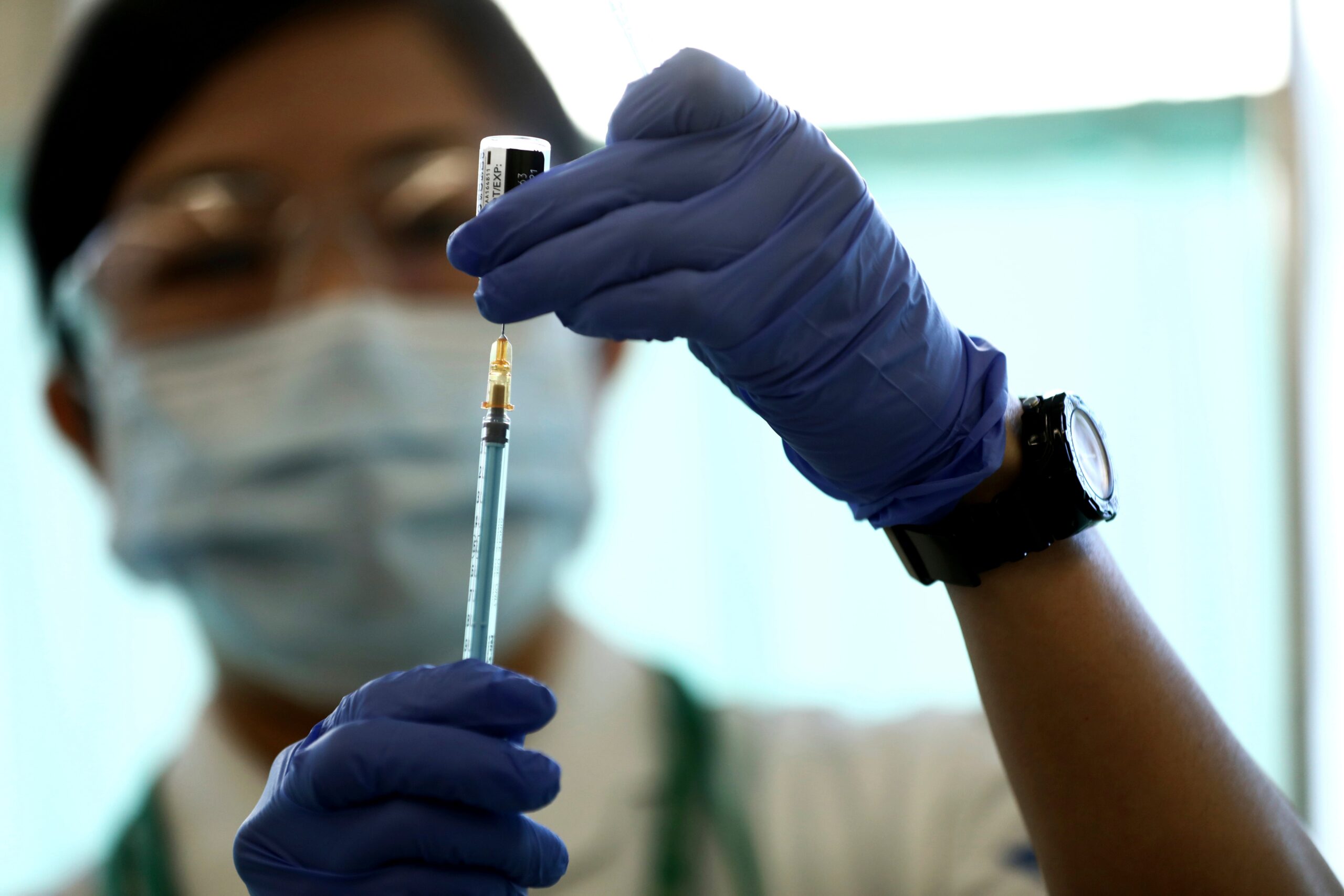By Shaima AlHosani & Ebtihal Mohsin Saleh
SCHS Nurse Unit
Introduction
Using the example of Salk poliovirus vaccine, the next two phases we chose to investigate are the impact on the incidence of disease on future generations and the eradication of the disease. Essentially the incidence in future generations is determined by the birth cohort that is susceptible to the disease. If the vaccine successfully prevents the disease and there is no transmission to future generations, there will be a lapse in the birth cohort of persons exposed to the disease. This analysis can be demonstrated through birth-cohort studies and surveillance of the disease in age populations. An acute example was the failed attempt to eradicate measles from the United States between 1978 and 1982. At that time the nationwide immunization rate with one dose of measles vaccine in children 15 months or older had increased from 47% in 1972 to 63% in 1976 and resulted in a substantial decrease in measles incidence. However, the disease incidence increased in 1981 and 1982 with epidemic outbreaks primarily in 16-22-year-old high school and college students who had not received the vaccine and of whom 6% were found to have serologically negative measles immunity. This led to an increased rate of measles among young adults in the next several years and a total of 2,322 cases in 1983.
During this time, a large number of persons in younger age groups were free of exposure to the disease and since there was no transmission of the disease to younger generations, it was successfully shown that the increased disease incidence among college students was due to the lack of natural or vaccine-induced immunity and was aborted in an eventual successful attempt to prevent disease in this population. (Atwood & Pearlman, 2023)(McAlpine & Zubair, 2023)
In this paper, we will analyze the relationship between vaccination and the prevalence of vaccine-preventable diseases. We will look at the incidence and prevalence of vaccine-preventable diseases before and after the introduction of the vaccine. Then, we will examine the changes in the age, gender, and socioeconomic status distributions for preventable diseases. Finally, we will take a careful look at the complications of vaccine-preventable diseases and the relative risk as compared with the vaccine. Each of these analyses will provide insight into the impact of vaccines on the prevalence of disease phase for a given illness. (Kitano, 2021)(Sun et al.2021)
Vaccination is widely considered one of the greatest medical achievements of modern civilization. Childhood diseases that were commonplace less than a generation ago are now increasingly rare because of vaccines. To be effective at eliminating communicable diseases, vaccines must be administered to sufficient levels of persons in the community. In recent times, parents have questioned whether the number of vaccines children receive and the timing of those vaccines can be harmful to children. Because of this concern, some parents have chosen to spread out or limit the number of vaccines their children receive. But what has been the effect of vaccines on the prevalence of disease and complications of vaccine-preventable diseases (Hotez, 2021)(McKenzie & Attwell, 2023)
Understanding the importance of vaccinations and their intended goals
Vaccination is the administration of a substance to induce the immune system to develop immunological memory. Vaccinations are a direct way of producing immunity to specific diseases using an inactivated form of bacteria or virus or a small part of the organism they produce. The result is that the person vaccinated becomes immune to the specific disease over a specific period. Vaccinations are now used widely across the world in an attempt to improve the health and well-being of the population by reducing the number of cases of preventable infections. (Sette & Crotty, 2022)(Pollard & Bijker, 2021)
The main goal of vaccinations is to primarily prevent the 6 infectious diseases identified as crippling/deadly by the WHO. The diseases are hepatitis B, diphtheria, pertussis, tetanus, haemophilus influenza, and measles. By preventing these diseases, it is expected that vaccinations will result in no chronic hepatitis B infection, no chronic carriage of hepatitis B virus, no tuberculous or pertussis meningitis, a major reduction of bacterial meningitis, no paralysis caused by polio, and no measles. This would ultimately lead to the global eradication of these diseases and a vast reduction in the number of people with disabilities caused by these infections. (Tsiligianni et al.2023)(Boey et al.2020)
Investigating the potential link between vaccinations and disability: An extensive analysis
One of the components of the Standard of Review Report included a thorough investigation of potential links between vaccination and disability. This involved an analysis of the literature, an expert opinion evidence review, and a legislative and case law review. This is the first time in a statutory benefits program evaluation that such a multi-disciplinary and comprehensive approach has been applied to this issue. (White et al.2024)(Wamba et al.2023)
The analysis showed that there are numerous conditions for which there is some scientific biological plausible reason to think they might be causally related to vaccination. There were many difficulties in obtaining a clear epidemiological/clinical picture of these conditions and what role, if any, vaccination plays in the medical cause (as opposed to a non-vaccine related idiopathy) of these conditions. The approach to the CAM treatments is considered more fully in section 5 below. There are some conditions for which the role of vaccination is a leading theory as to causation, e.g. Hepatitis B vaccinations for Multiple Sclerosis. This issue is considered more fully in the context of that vaccination. The majority of these conditions fall short of eligibility under the 10A(3A) test i.e. they are not a vaccine injury as opposed to being an idiopathy.
This is made clearer through the legislation requiring the establishment of a negative vaccine injury for a claim to succeed. An example of this can be observed in Scleroderma. (Akhtar et al.2022)(Sirbu et al.2020)
Debunking commonly held misconceptions and false beliefs
The existence of vaccinations has also triggered many people to question its use and effect due to commonly held misconceptions and false beliefs that have been spread. This essay will now attempt to bury these misconceptions with factual evidence. “Vaccinations cause autism” is a popular belief that has deterred some people from vaccinating their children. It is essential to understand that autism is a developmental disorder that commences during pregnancy and has an impact after the time of expected vaccination. A study conducted in Japan suggested that the MMR vaccine increased the risk of autism in young children. This study has often been misinterpreted and has led to a shift in vaccination for the MMR vaccine to be less frequent, allowing for a higher incidence of contracting measles in unvaccinated children.
No other study has been able to reproduce similar results, and with the lack of conviction shown by the Japanese people, no proven causal relationship between autism and the MMR vaccine can be formed. Another common misconception is that “vaccinations aren’t necessary” due to rates of infectious diseases and known severe effects (e.g. paralysis from polio) dropping significantly. The reason for these declining trends relies on the effectiveness of vaccinations in eradicating and reducing instances of these diseases. A closer look at these diseases in the past century reveals large drops in the incidence of Pertussis, Measles, Tuberculosis, and H. Influenzae due to vaccinations. A study has recorded that in the USA from 1912-1973, mortality reduction in Measles disease had already dropped by 97.7% before the use of the measles vaccine. This suggests that the disease was already becoming less of an issue, but it is important to understand that vaccination was what initially caused this dramatic fall in cases of the disease. And without the presence of effective vaccines, there is the worry of diseases such as Pertussis making a resurgence in today’s children. (Gabis et al.2022)(Hasnain, 2023)
Conclusion and future considerations
In conclusion, the literature reviewed in this paper did not give a definitive statement regarding vaccinations and their impact on disability. In some instances, usually those with newer vaccinations, the literature agreed that vaccinations decreased the rate of disability. An example would be polio, one of the most debilitating diseases that a vaccine can prevent. The literature all agreed that the vaccine for polio has dramatically decreased the rate of polio in developing countries. Rates dropped in these countries anywhere from 50% in Cuba to 100% in India and were still dropping by 40% globally even in areas where only oral polio vaccines were used. Although most of these changes are foreign, it is obvious that a disability was prevented. Another example would be the rubella vaccine, which wiped out the disability of congenital rubella syndrome almost entirely. (Badizadegan et al.2022)(Voorman et al.2023)
On the other end of the spectrum, the literature also agreed that vaccinations increased the rate of disability in cases of vaccine-related injury. Unfortunately, the rate of these injuries is difficult to pinpoint, as the severity varies and many are underreported. An older argument used to be on the topic of smallpox vaccination. Smallpox was rare in the US, so in 1968 the US began a targeted vaccination campaign. This resulted in a vaccine injury rate of smallpox greater than the disease itself and was one of the main reasons for discontinuing the use of the vaccine. Overall, it is difficult to say whether smallpox vaccinations prevented more disability than they produced. Now smallpox vaccinations are no longer in use, which is a clear indication that they are ineffective in preventing disability compared to the costs. (Kang et al., 2024)(Crum et al., 2021)
While the two instances above are more black and white, the majority of literature findings were gray in comparison. This is due to many different variables, such as improved sanitation and healthcare and differing criteria for diagnosis, that are difficult to control. These make it difficult to assess the usefulness of vaccinations in the prevention of disability. On many disease/vaccine pairs, the literature was inconclusive in weighing the rate of disease vs. the rate of vaccine injury for disability. Other pairs had differing results based on the country in question. An example of inconclusive findings would be Hepatitis B, while differing results can be seen between the UK and the Gambia for the same Hepatitis B vaccine. (Zarghami et al.2021)(Suffel et al.2023)
Future considerations for this topic need no outline. Vaccinations are a method of prevention that will continue to be changed and studied. As new vaccinations are developed, they must be assessed for cost-effectiveness and safety than earlier vaccinations for the same disease. The studies on vaccinations and the impact of disability are important in determining this, so it will be important to continue funding such studies for both old and new vaccinations. With growing technologies, improving worldwide communications and knowledge, and a changing global health landscape, these studies may one day give a clear answer on whether vaccinations are a good method of disability prevention. (Liu et al.2023)
References:
Atwood, A. & Pearlman, S. (2023). The Long Term Benefits of Vaccination Campaigns: Evidence from Measles. haverford.edu
McAlpine, L. S. & Zubair, A. S. (2023). Neurological sequelae of vaccines. Neurological Sciences. springer.com
Kitano, T. (2021). The estimated burden of 15 vaccine-preventable diseases from 2008 to 2020 in Japan: A transition by the COVID-19 pandemic. Journal of Infection and Chemotherapy. jiac-j.com
Sun, X., Xu, Y., Zhu, Y., & Tang, F. (2021). Impact of non-pharmaceutical interventions on the incidences of vaccine-preventable diseases during the COVID-19 pandemic in the eastern of China. Human Vaccines & Immunotherapeutics, 17(11), 4083-4089. tandfonline.com
Hotez, P. J. (2021). Preventing the next pandemic: Vaccine diplomacy in a time of anti-science. 1985716.com
McKenzie, L. & Attwell, K. (2023). ‘I’m provax’: Pro‐vaccination personal histories and socialities of older Australians in the COVID‐19 pandemic. Sociology of Health & Illness. wiley.com
Sette, A. & Crotty, S. (2022). Immunological memory to SARS‐CoV‐2 infection and COVID‐19 vaccines. Immunological reviews. wiley.com
Pollard, A. J. & Bijker, E. M. (2021). A guide to vaccinology: from basic principles to new developments. Nature Reviews Immunology. nature.com
Tsiligianni, I., Bouloukaki, I., Papazisis, G., Paganas, A., Chatzimanolis, E., Kalatharas, M., … & Tsimtsiou, Z. (2023). Vaccination coverage and predictors of influenza, pneumococcal, herpes zoster, tetanus, measles, and hepatitis B vaccine uptake among adults in Greece. Public Health, 224, 195-202. [HTML]
10.Boey, L., Bosmans, E., Ferreira, L. B., Heyvaert, N., Nelen, M., Smans, L., … & Vandermeulen, C. (2020). Vaccination coverage of recommended vaccines and determinants of vaccination in at-risk groups. Human Vaccines & Immunotherapeutics, 16(9), 2136-2143. tandfonline.com
11. White, R. G., Menzies, N. A., Portnoy, A., Clark, R. A., Toscano, C. M., Weller, C., … & Jit, M. (2024). The Full Value of Vaccine Assessments Concept—Current Opportunities and Recommendations. Vaccines, 12(4), 435. mdpi.com
12. Wamba, S. F., Queiroz, M. M., & Hamzi, L. (2023). A bibliometric and multi-disciplinary quasi-systematic analysis of social robots: Past, future, and insights of human-robot interaction. Technological Forecasting and Social Change, 197, 122912. [HTML]
13. Akhtar, S., El-Muzaini, H., & Alroughani, R. (2022). Recombinant hepatitis B vaccine uptake and multiple sclerosis risk: A marginal structural modeling approach. Multiple Sclerosis and Related Disorders, 58, 103487. [HTML]
14. Sirbu, C. A., Florea, A. A., Ghinescu, M. C., Docu‑Axelerad, A., Sirbu, A. M., Bratu, O. G., & Radu, F. I. (2020). Vaccination in multiple sclerosis‑Challenging practices. Experimental and Therapeutic Medicine, 20(6), 1-1. spandidos-publications.com
15.Gabis, L. V., Attia, O. L., Goldman, M., Barak, N., Tefera, P., Shefer, S., … & Lerman-Sagie, T. (2022). The myth of vaccination and autism spectrum. European Journal of Paediatric Neurology, 36, 151-158. ejpn-journal.com
16. Hasnain, Z. (2023). The MMR vaccine and autism. rcsi.com
17. Badizadegan, K., Kalkowska, D. A., & Thompson, K. M. (2022). Polio by the Numbers—A Global Perspective. The Journal of infectious diseases, 226(8), 1309-1318. oup.com
18. Voorman, A., Lyons, H., Bennette, C., Kovacs, S., Makam, J. K., Vertefeuille, J. F., & Tallis, G. (2023). Analysis of population immunity to poliovirus following cessation of trivalent oral polio vaccine. Vaccine, 41, A85-A92. sciencedirect.com
19. Kang, C. R., Choe, Y. J., & Yoon, S. J. (2024). COVID-19 Vaccine Injury Compensation Program: Lessons Learned From a Review of 10 Implementing Countries. Journal of Korean Medical Science. nih.gov
20. Crum, T., Mooney, K., & Tiwari, B. R. (2021). Current situation of vaccine injury compensation program and a future perspective in light of COVID-19 and emerging viral diseases. F1000Research. nih.gov
21. Zarghami, A., Li, Y., Claflin, S. B., van der Mei, I., & Taylor, B. V. (2021). Role of environmental factors in multiple sclerosis. Expert Review of Neurotherapeutics, 21(12), 1389-1408. [HTML]
22. Suffel, A. M., Ojo-Aromokudu, O., Carreira, H., Mounier-Jack, S., Osborn, D., Warren-Gash, C., & McDonald, H. I. (2023). Exploring the impact of mental health conditions on vaccine uptake in high-income countries: a systematic review. BMC psychiatry, 23(1), 15. springer.com
23. Liu, Y., Procter, S. R., Pearson, C. A., Montero, A. M., Torres-Rueda, S., Asfaw, E., … & Vassall, A. (2023). Assessing the impacts of COVID-19 vaccination programme’s timing and speed on health benefits, cost-effectiveness, and relative affordability in 27 African countries. BMC medicine, 21(1), 85. springer.com


























